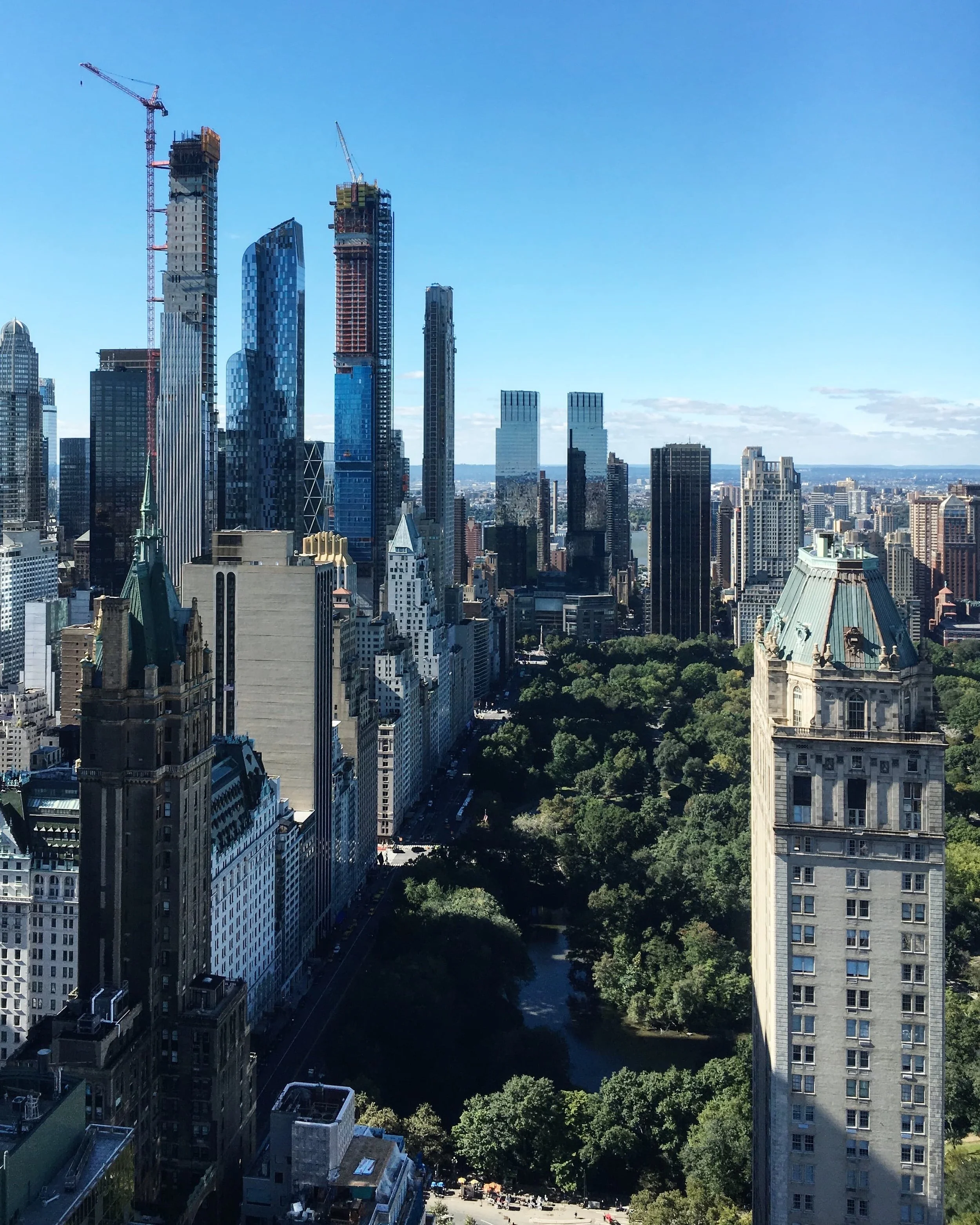Rising out of Tricks – Manhattan's Sylphlike Towers
Photo: Michael Young @ https://www.theb1m.com/video/the-rise-and-rise-of-new-yorks-billionaires-row.
The human imagination is often surpassed by the reality it generates, and history unfurls as a series of surprises. This is the case of a handful of NYC skyscrapers, collectively a phenomenon that leaves us awestruck, not so much because of their architecture but because of the complexity of the manipulations of the existing laws and regulations that allow them to materialize. The scattered bunch of very tall and slim buildings is an enclave called "Billionaire's Row," located around 57th Street between Columbus Circle and Park Avenue that came to entertain the skyline of New York around the end of the millennium's first decade. These include 432 Park Avenue by Rafael Viñoly, 111 West 57thstreet by Shop Architects, One57 by Cristian de Portzamparc, Central Park Tower by Adrian Smith Gordon Gill, and 220 Central Park South by Robert A.M. Stern, among others. They include some of the most expensive private residences in the world, whose existence is tightly linked to zoning mandates.
Zoning “is a law that organizes how land may be used” through regulations that “set limits on how a property owner may use land (rather than requiring them to use it in a particular way).” The Zoning Resolution in New York has fourteen articles and ten appendices, which provide supplemental information, and which constitute the text where the contentious technicalities were to be found. Each of the buildings in “Billionaire’s Row” has its own peculiar way in which their crystallization came into being but because the land available in that specific neighborhood is scarce and only small lots are still available, they all have in common the slim and very tall proportions. Here we find the origin of their peculiar form.
Among the tricks developers used to turn these wonders into a reality were to look for loopholes in the zoning regulations of the New York Department of City Planning. The most appalling maneuverings are the escapes and skillful means they utilize, a puzzle-like scheme developed to access air rights opening a previously nonexistent legal space. The developers had to concentrate on finagling with the city regulating body and its controlling laws.
To build very high, developers looked to find ways of tinkering with the city's zoning and planning directives, and craftily searched the surroundings for opportunities to acquire the air rights from adjoining properties. These in turn would have to give up their rights for posterity to build higher in exchange for monetary gains. The air space above a property was converted into an exchange of capital value for the benefit of those with the means to acquire it, an effort that in some cases took years of study and negotiation.
The concept of buying and selling “air rights” is a difficult one for laypeople to comprehend. However, this concept is deeply rooted in our society since the Romans declared “[to] whomever the soils belong, he owns also the sky,” and according to law professor Martin A. Schwartz it was incorporated in the 17th century into the common laws in England and the United States. In modern times this precept began to be challenged with air travel, restricting landowners’ air rights to non-navigable airspace. Then the creation of multi-owner structures added to the confusion. Nowadays it is unclear if the transfers of airspace can be divorced from surface ownership and normally it needs some sort of legal warrant to be conceded. However, the transfer of air rights has become more habitual and tends to be more feasible in urban areas and especially in densely populated cities. City municipalities have been using them to pay for things they find difficult to fund such as maintenance of landmark buildings and low-income housing. But one aspect that deter their use is their cost and timing to process the requests. It is an unaffordable process for ordinary citizens and an opportunity to shine for the international super-rich.
Intimating a sort of magic in the gleaming tower of 111 E 57th Street at night, L'Observatoire International, the company in charge of the lighting design, stated on its website that the illumination "evokes jewelry and will shimmer down the cladding of this very feminine and graceful tower." To a certain extent, all the edifices in Billionaire's Row share the sylphlike delicacy and innocence suggested in these lines. However, standing tall in the city's skyline, the towers radiate in great contrast with the obscure way they came into existence. The emergence of these residential buildings in Uptown Manhattan was afforded by some New York developers' machinations, imagination, and cunning. To clear the tight pathways of the articles of the zoning regulations of New York City, they shuffled them until exhaustion to make the obelisk-like buildings a reality.





